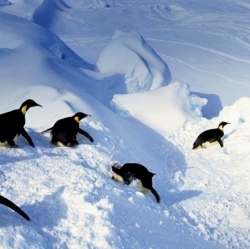
Science drives human investigation in Antarctica today, yet there’s a reason why geologists often take centre-stage. Governments really want to know what’s under the ice. Whisper the word: oil. Some predictions suggest the amount of oil in Antarctica could be 200 billion barrels, far more than Kuwait or Abu Dhabi.
Antarctic oil is extremely difficult and, at the moment, prohibitively expensive to extract – but it’s impossible to predict what the global economy will look like in 2048, when the protocol banning Antarctic prospecting comes up for renewal. By that stage, an energy-hungry world could be desperate.
The Antarctic Treaty has put all territorial claims into abeyance, but that hasn’t stopped rule-bending. The best way to get a toehold on what may lie beneath is to act as if you own the place. The US operates a base at the South Pole, which conveniently straddles every territorial claim. This year China built its fourth base. Next year it will build a fifth.
All Antarctica’s 68 bases are professedly peaceful research stations, established for scientific purposes, but the ban on militarisation is widely flouted. Chile and Argentina, for instance, both maintain a permanent army presence on the Antarctic mainland, and the worry is that some countries are either not reporting military deployment, or may instead be recruiting civilian security contractors for essentially military missions.
Antarctic skies are unusually clear and also unusually free from radio interference; they are ideal for deep-space research and satellite tracking. But they are also ideal for establishing covert surveillance networks and remote control of offensive weapons systems.
The Australian government recently identified China’s newest base as a threat, specifically because of the surveillance potential. It said: "Antarctic bases are increasingly used for ‘dual-use’ scientific research that’s useful for military purposes."
